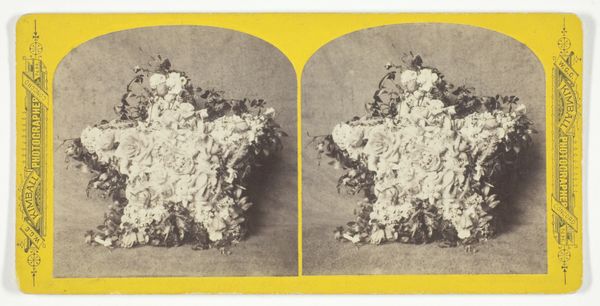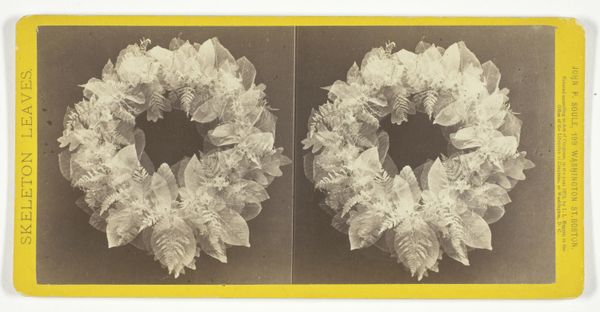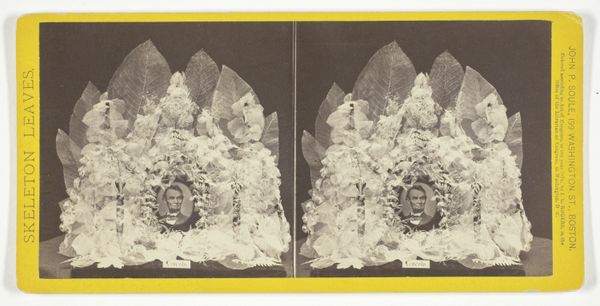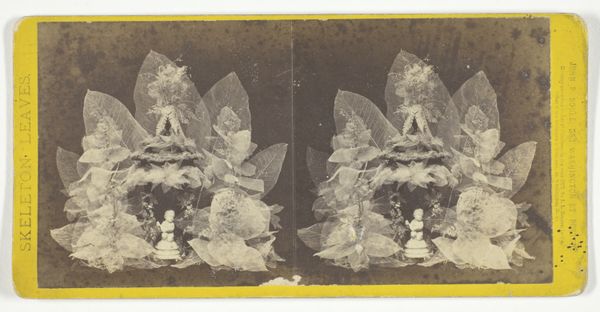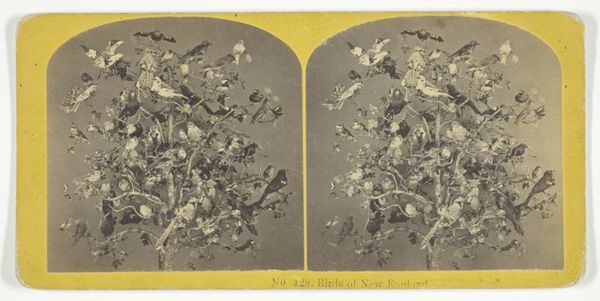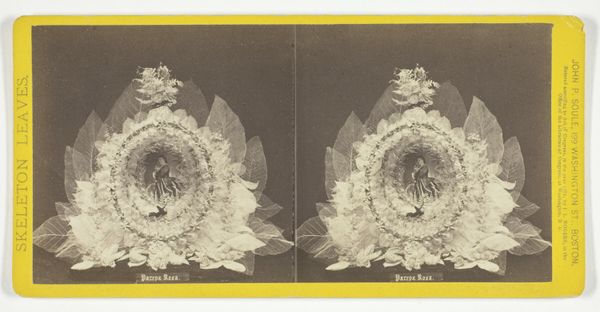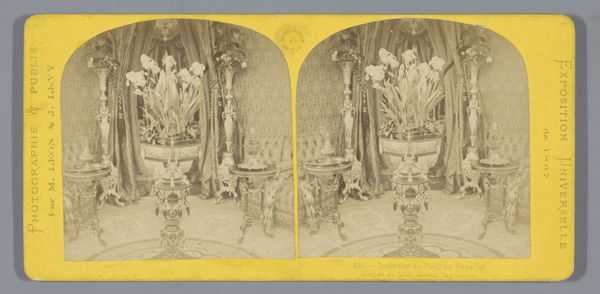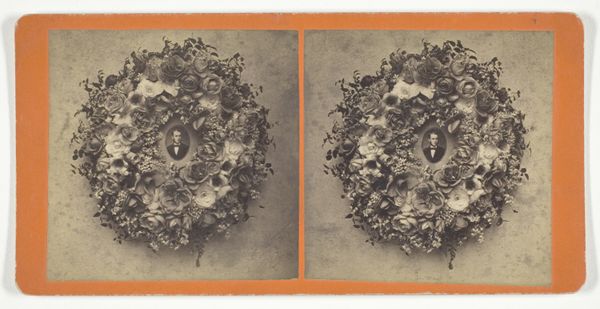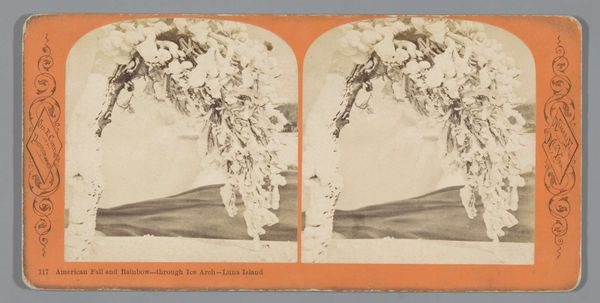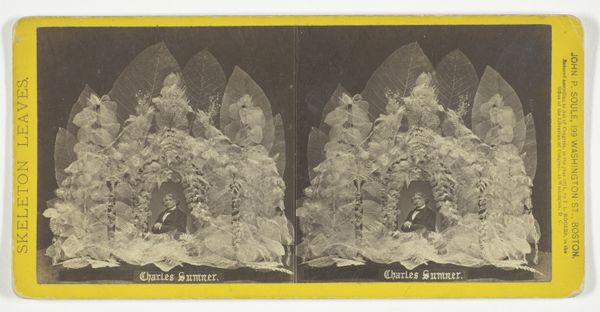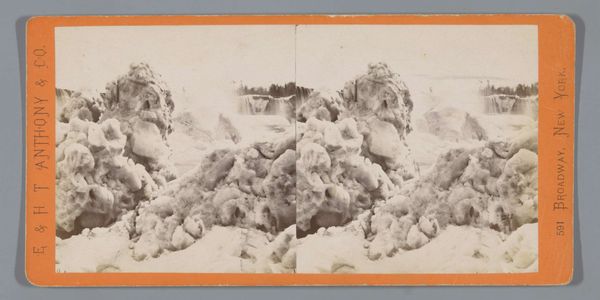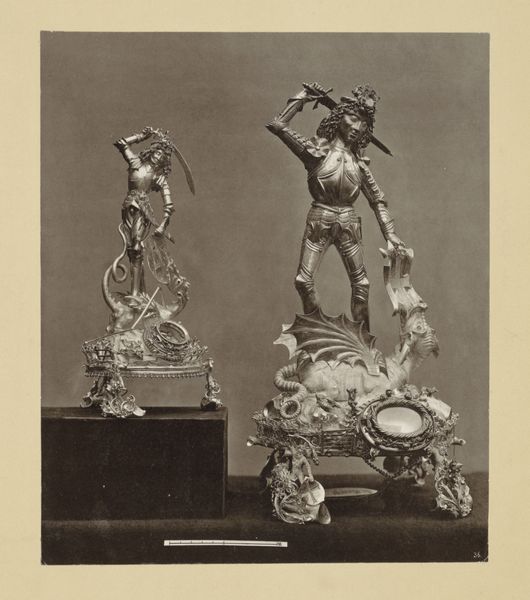
photography
#
portrait
#
16_19th-century
#
decorative element
#
photography
#
united-states
#
decorative-art
#
decorative art
Dimensions: 8 × 7.7 cm (each image); 8.6 × 17.5 cm (card)
Copyright: Public Domain
John P. Soule made this stereograph of Henry Ward Beecher in the United States during the late 19th century, a period marked by significant social and political upheaval. This image presents a portrait of Beecher, a prominent abolitionist and social reformer, set within an elaborate display of preserved foliage and decorative elements. The careful arrangement of the display, combined with the photographic medium, speaks to the cultural values placed on memorialization. Beecher was a controversial figure. As a public intellectual and religious leader, he advocated for progressive causes like abolition, and women's suffrage. His sermons and speeches often challenged the status quo, contributing to public discourse on pressing social issues. However, the inclusion of his portrait in such an elaborate setting is a conservative reflection of his public role. To fully understand this stereograph, one must consider the social and institutional contexts in which it was created. Researching the history of photography, the market for stereoscopic images, and the cultural significance of figures like Beecher can provide valuable insights into its meaning.
Comments
No comments
Be the first to comment and join the conversation on the ultimate creative platform.

